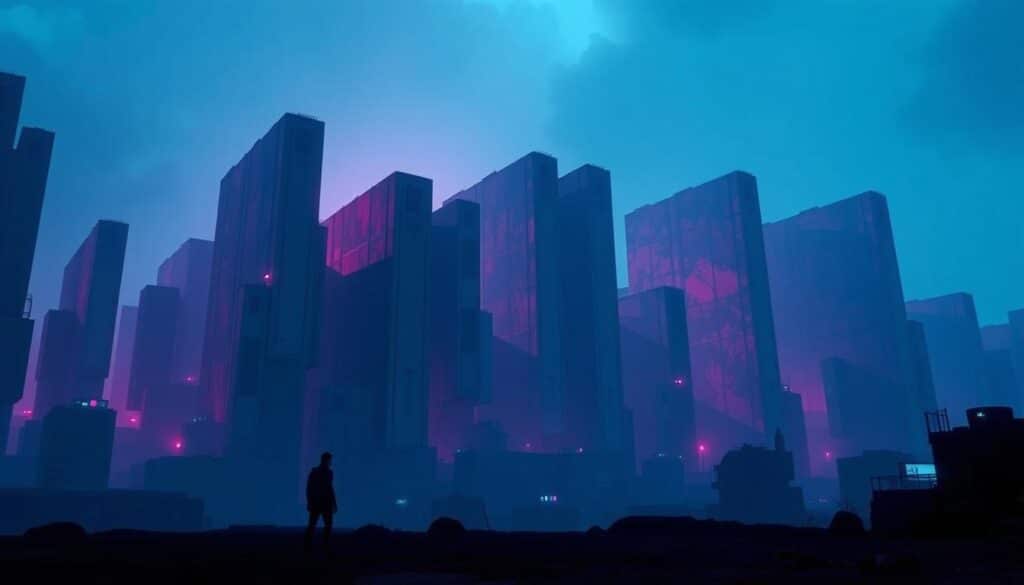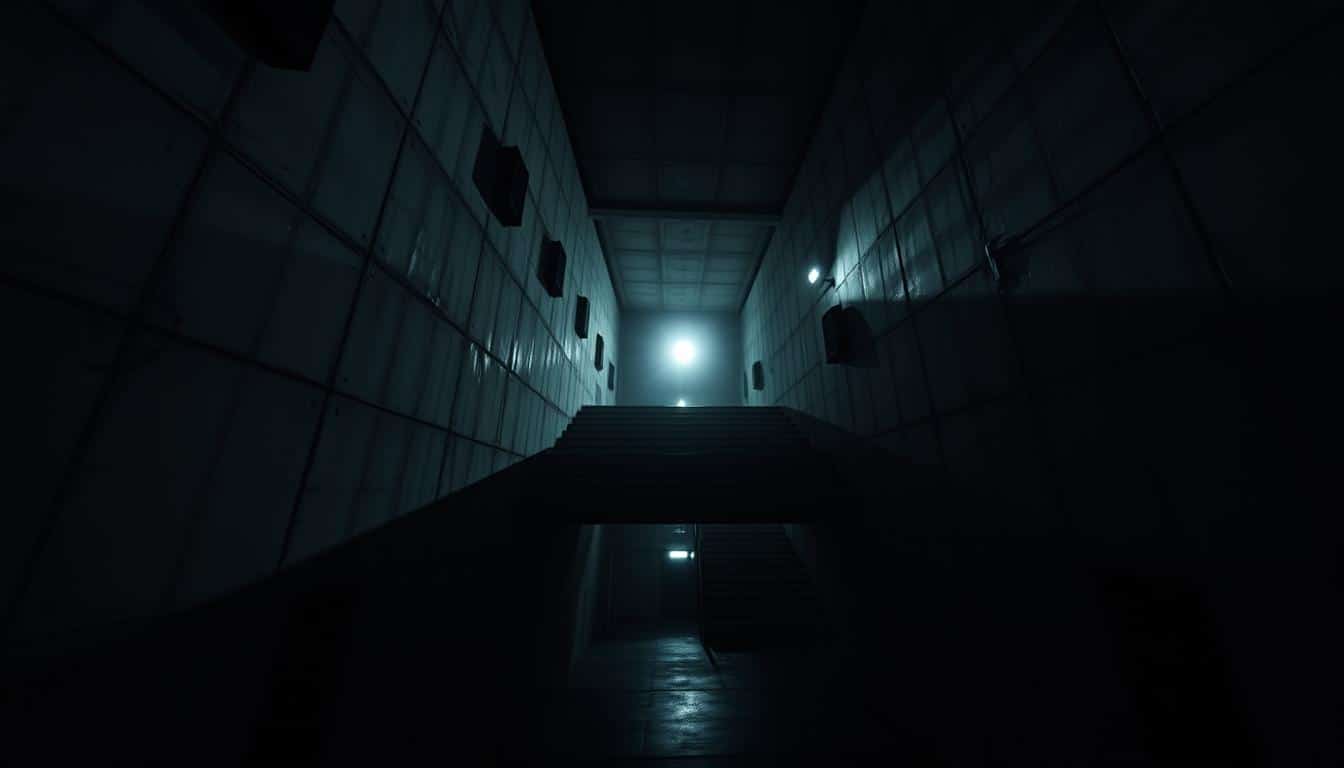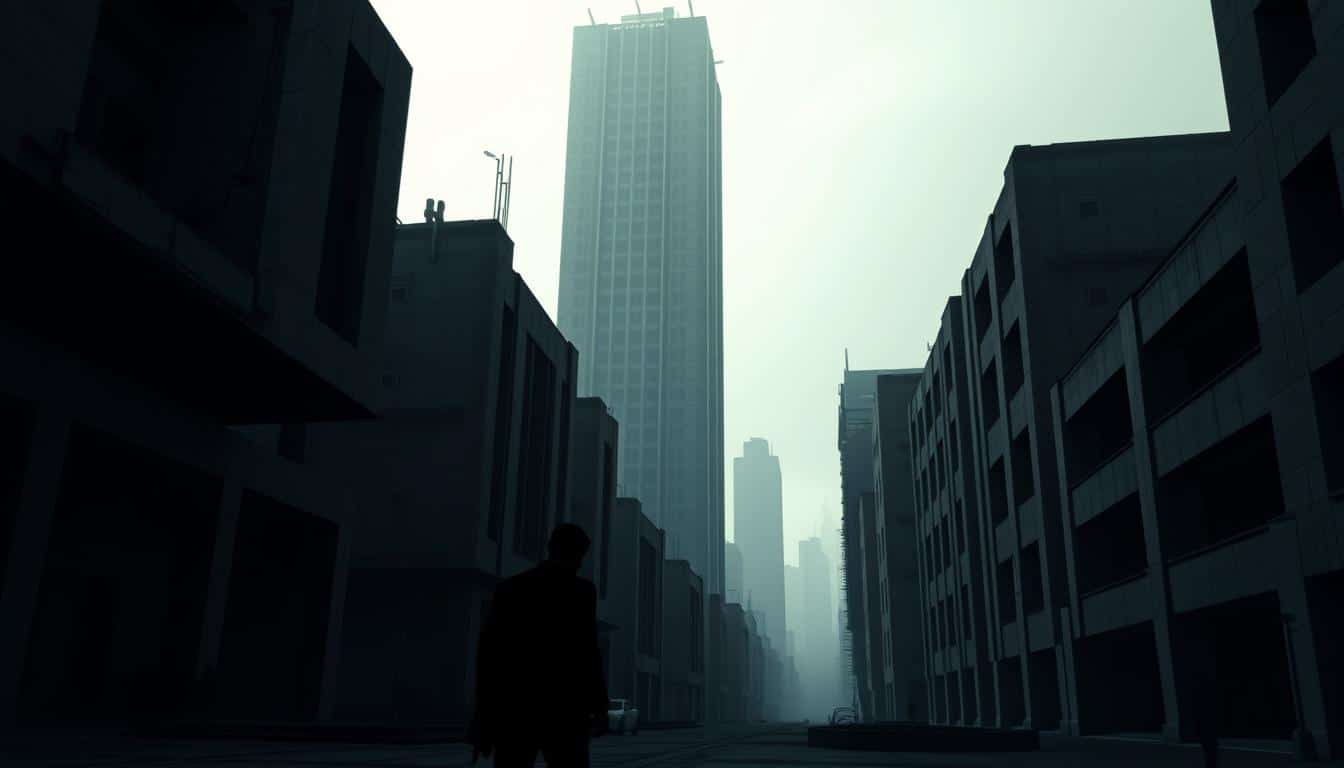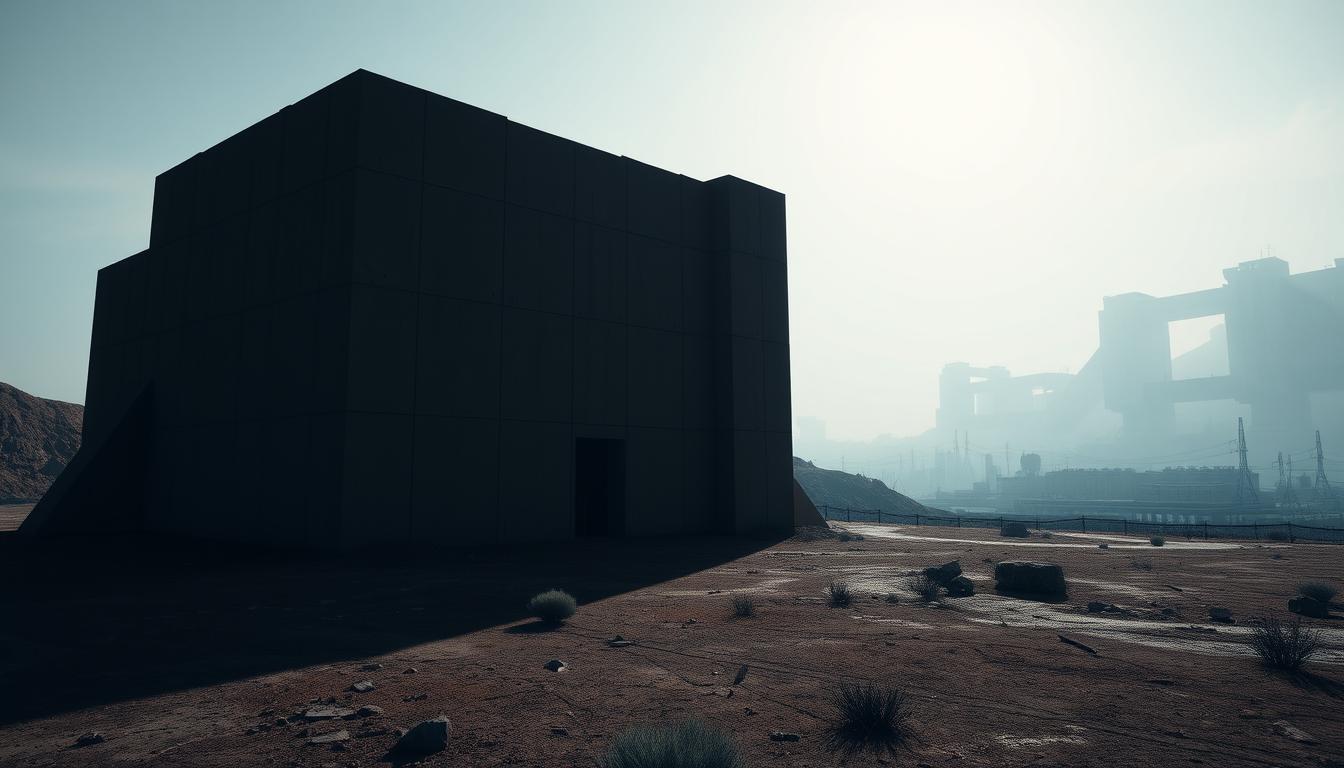Video game architecture greatly influences the player’s experience today. By looking at brutalist aesthetics, we learn a lot about fear. Brutalism’s stark and geometric shapes naturally bring out unease and tension. This makes it perfect for game creators to use.
Brutalist game settings turn architecture into something active, not just scenery. It becomes part of the game’s emotional journey. By studying this interaction with fear, we realize how design choices deepen our feelings in gaming.
The Aesthetic of Brutalism in Gaming
Brutalist architecture is a big influence in video game design. It changes how players see and feel in virtual worlds. Games use brutalism’s main ideas to create unique vibes. Knowing about brutalism makes gaming more fun.
Defining Brutalist Architecture
Brutalism started in the mid-20th century. It’s known for showing off raw concrete and simple shapes. The style focuses on community needs. Its simple look puts function first. This brings a real feel to city scenes.
Integration of Brutalism in Video Games
Lately, more video games are adding brutalist designs. This style helps make game worlds feel real and full of emotion. Players can feel the impact of their environment.
Brutalism brings out dark or tough themes in games. It helps tell the story and makes players more interested. This style adds depth to the game’s world and story.

Creating Tension Through Architecture
The architecture in brutalist video games creates tension for players. Design elements shape the game’s atmosphere and affect how we feel and move inside the game. The use of space and materials can really make the gaming experience unique and emotional.
Spatial Awareness and Player Immersion
Brutalist game designs make players more aware of their surroundings. They feature large, open areas and complex paths to explore. This forces players to pay more attention to where they are going, making them feel more involved in the game. Stark shadows and big, scary buildings make the game feel more intense, which draws players deeper into the story.
Environmental Storytelling and Fear
In brutalist games, the setting tells a story, often about things falling apart or giving off a scary vibe. Falling-apart buildings make players feel lonely, reflecting what the characters might be feeling. Games like Inside and Dishonored use their settings to make players anxious. This connects our feelings with the story the game designers want to tell.
The Role of Sound Design in Brutalist Worlds
In brutalist video games, sound design is key for immersive experiences. It adds complexity, making the game feel more real. Players explore stark worlds, where the design and sounds increase tension and feelings.
Creating Atmosphere with Audio Elements
Sound design is crucial in brutalist games for atmosphere. Distant echoes and creaking sounds make the world feel alive. These sounds make the setting tense, drawing players in.
Subtle noises like whispers keep players emotionally connected to the story. This deepens the gaming experience.
How Sound Heightens Fear Responses
Sound can make games more frightening by playing with speed, loudness, and pitch. A good soundscape makes everything feel scarier. Sudden noises make players think danger is near, causing natural fear reactions.
This link between sound and feelings creates suspense. It keeps players engaged and emotionally involved.
Deconstructing Fear in Brutalist Video Game Environments
Brutalist video game settings offer a special vibe that breaks down fear through design choices. These places shape the story and change how players feel and play. By looking at important games, we see how these spots bring tension and fear into the game.
Analyzing Key Game Examples
Games like *The Last of Us* and *S.T.A.L.K.E.R.* show brutalism’s stark, empty worlds boosting game intensity. In *The Last of Us*, ruined cities stir feelings of loss and defenselessness. *S.T.A.L.K.E.R.* throws players into harsh lands, adding a real touch that spikes fear. These games show how building styles affect players, making them feel more as they move through scary settings.
Player Psychology and Emotional Responses
Brutalist designs mess with player minds. Big, simple buildings make them feel anxious and alone, changing how they feel overall. As gamers go through these scary places, they face their fears. This makes gaming more than fun; it’s a deep dive into emotions brought out by the game world.
Artistic Inspirations Behind Brutalist Aesthetics
Brutalist aesthetics in video games are inspired by a mix of art that makes worlds feel real. Movies and books add layers, helping players connect more. These elements show brutalism’s roots in society’s struggles, making games more engaging.
Influence of Film and Literature
Blade Runner shows a future falling apart. It’s a big art inspiration for games. The movie’s dark world adds to the game’s feeling of being stuck. Books about bad futures also pull players in. They let you dive into stories of worlds falling apart.
The mix of movies and books makes games better. It lets players see and feel deep stories. This makes exploring games more interesting.
The Historical Context of Brutalism
After World War II, brutalism looked at new ways to build hope. But it turned into a symbol of being left behind. Games mirror this shift. They show places once great now sad.
This setting lets players’ stories happen against a deep background. It mixes art ideas with real history. This makes games more meaningful, reminding us of the past.
The Transformation of Fear in Gaming Narratives
Narratives in gaming have grown to explore fear in new, complex ways. As players step into stark worlds, the link between their choices and character growth shines brighter. This shift brings out deeper feelings as players roam through these strict landscapes.
Character Development and Player Agency
How characters change is key to how players face fear. As they move through harsh lands, characters show both weaknesses and strength, mirroring the tough worlds they live in. Take Detroit: Become Human, for example, where what players decide can change their character’s journey in big ways.
This power to choose lets players face their fears head-on, making the story more real for them.
Narrative Techniques in Portraying Fear
To make fear feel real, stories use new tricks. Things like stories that can end in many ways, unknown storytellers, and changing points of view make the game feel deeper emotionally. These methods make players face their own fears and think about them, with severe architecture symbolizing the emotional journeys they embark on.
The smart mix of storytelling and player decisions makes exploring fear exciting, helping players deeply bond with their characters.
Industry Reception and Player Feedback
The discussion about brutalist video games has been lively. These games have a unique look that gets mixed reactions. Critics praise their architecture and stories.
But some players find the stark visuals hard to enjoy emotionally.
How Games are Critically Received
Brutalist design in games has fans and critics. Experts often like how these games mix building styles with story. But not all players like the look.
This shows why it’s important to think about what players like.
Community Discussions on Fear and Design
People talk a lot online about how brutalist games make them feel. They dive deep into how design choices stir up emotions.
These talks help us see how architecture affects the game’s feel.
The Future of Brutalist Design in Video Games
The landscape of brutalist design in video games is changing fast. New technologies are shaping future design trends. These changes will alter how players experience the grim, yet fascinating worlds of these games.
Gaming innovations are creating more interactive experiences. Players will find themselves in brutalist settings that blend stark designs with gameplay. This mix stirs both fear and curiosity.
Emerging Trends and Innovations
With VR and AR growing, players will see brutalist designs in new ways. These technologies make the experience more intense. They bring the essence of brutalism to life.
- Increased immersion that captures the essence of brutalism.
- Interactive gameplay mechanics that challenge traditional narratives.
- Environmental storytelling that leverages the starkness of brutalist architecture.
This progress suggests a future where games pull you deeper into their worlds. Emotional connection and immersive settings will become more common.
Potential Balance Between Fear and Playability
Creating games with brutalist designs presents a challenge. The goal is to make the game scarier without making it less fun. Developers use several strategies for this:
- Adaptive narratives that respond to player choices, enriching their experience.
- Designing gameplay elements that engage players without overwhelming them.
- Utilizing feedback mechanisms that encourage exploration within the foreboding environments.
By balancing fear and fun, developers can create memorable games. These games let the unique beauty of brutalism stand out.
Conclusion
Exploring brutalism in gaming shows a new way to connect with players. It mixes architecture, sound, and story telling. It breaks down fear, letting players dive deep into the game’s world. This combination creates a lasting impact even when the game is off.
Brutalism is not just about looks; it shapes how players feel and stay engaged. With the gaming world changing, the chances to use brutalism are endless. Developers can use its key points for not just scaring players but for creating deeper, meaningful games.
So, brutalist games are becoming more important. They change how stories and settings change what players do. Looking forward, using brutalism will bring games that not just challenge players but also touch their hearts in the sprawling world of games.



